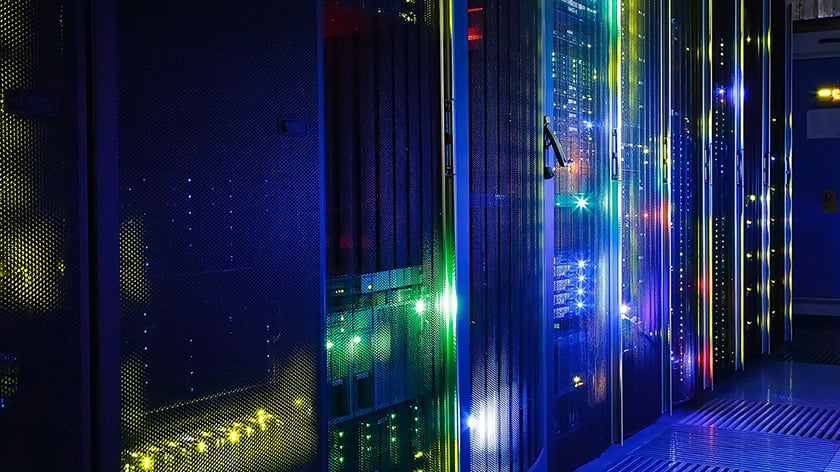Largest Wireless DC Power Monitoring Deployment in the World
In late 2019, as the global Covid pandemic was about to explode, a Fortune 100 telecommunications company engaged Packet Power to solve a critical...
3 min read
![]() Packet Power Team
:
Feb 15, 2024 7:47:33 AM
Packet Power Team
:
Feb 15, 2024 7:47:33 AM

The latest survey of data center operators shows the biggest challenges the industry is facing. The Uptime Institute aggregated answers from hundreds of digital infrastructure managers worldwide. Here are the things they say are top of mind:
PUE
The global average Power Usage Effectiveness (PUE) has remained flat for four years. A significant investment (think retrofitting existing facilities with liquid cooling, more energy-efficient servers, and high-efficiency UPS and PDUs) will be required in order to achieve regulatory goals and to simply save money on daily operating costs.
Rack Density
Rack density is increasing, but it’s slow going. The survey found 87% of operators still don’t have a rack in their facility that is operating on more than 30kW. There is anecdotal evidence that the rise of AI is pushing more and more operators to increase rack density at a faster rate, and this trend is likely to continue.
Data Security
A large majority (64%) of operators listed data security as a reason why they have not moved critical workloads to the public cloud.
Outages
Fewer operators reported outages (which has been a trend in this industry study for the past three years). However, they remain expensive problems when they do occur (1 in 6 operators estimated their latest outage cost at least $1 million). Power (52%) and cooling (19%) issues were the top two reported causes of outages.
Staffing Shortages
Data centers, like many industries, are facing a labor shortage. The survey found 43% of operators are struggling to find mid and lower-level operations staff, and 35% struggle to find operations managers. Since 25% of facilities report struggling to find electrical workers and 17% struggle to find people for cabling and IT jobs, it’s possible infrastructure updates are being held back because of worker shortages.
Since branch circuit power monitoring in data centers is akin to having a dedicated mini-meter for each electrical circuit supplying power to a server rack, it is obvious how retrofitting a facility with a system can address many of the challenges listed above.
A system like Packet Power’s can track both real-time power consumption and provide historical data so you can see trends. Adding environmental monitoring can further improve a project’s ROI because operators can use the data on temperature, humidity, and airflow to optimize cooling efforts and drive PUE down. When changing out hardware or installing liquid cooling systems that can cost hundreds of thousands of dollars, it makes sense for operators to figure in state-of-the-art monitoring systems that cost a small fraction of the overall price.
Adding branch circuit power monitors to a Remote Power Panel (RPP) allows operators to find efficiencies and conduct capacity planning while safely increasing the density within the racks.
Packet Power’s sensors communicate on a secure wireless mesh network, which is designed to only handle power and environmental data, and can be physically isolated from corporate data networks. Their wireless nature, and the fact that they can often be installed in an energized environment, also reduce cabling needs and downtime. The monitoring sensors can be relocated and more can be added to a system if a facility changes its layout or creates denser racks in the future.
In the survey, almost three-quarters (73%) of operators said they expect AI to help reduce their staffing needs. Although most of those (48% of all operators) said it would take at least 5 years to get there. Many are relying more on the greater visibility that wireless power and environmental monitoring solutions offer in order to cut down on staffing hours. If a facility is still having technicians walk around to manually collect readings of equipment there are significant time savings that can be achieved with a system that offers remote visibility while eliminating any potential human error.
Since Packet Power’s sensors can feed data into an existing Building Management System (BMS) or Data Center Infrastructure Management (DCIM) software, facilities already have the data points these tools will need to make AI-powered recommendations around overall performance optimization.
Branch circuit monitoring also offers an increasingly important capability for COLOs—metered billing. As end users look for ways to only pay for the computing power they’re using, being able to point to exact data is critical.
If you’d like help with answers about retrofitting your data center with power and environmental monitoring solutions, contact sales@packetpower.com and we will be happy to help you.

In late 2019, as the global Covid pandemic was about to explode, a Fortune 100 telecommunications company engaged Packet Power to solve a critical...

Although liquid cooling is already widely used in many data centers, further expansion of the practice is coming fast. A market study in Asia...

As the demands on data centers continue to grow, space is at a premium in existing facilities. In an attempt to maximize their computing per square...